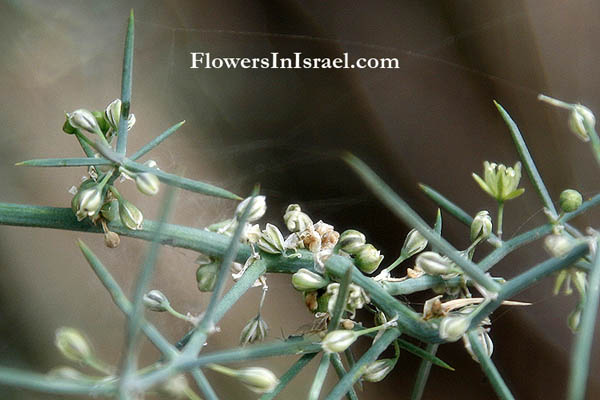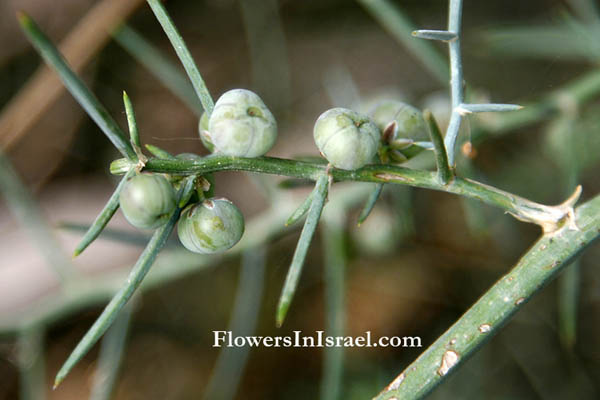Hebrew: אספרג ארוך-עלים, Arabic: شعيؾ -٘لايوْ
| Scientific name: | Asparagus horridus L. | |
| Synonym name: | Asparagus broussonetii Jacq., Asparagus stipularis Forssk. | |
| Hebrew name: | אספרג ארוך-עלים | |
| Arabic vernacular name: | شعيؾ-٘لاي | |
| Family: | Liliaceae, שושניים |

|
| Life form: | Geophyte | |
| Spinescence: | Stems | |
| Stems: | Woody stems to 60cm | |
| Leaves: | Alternate, smooth to papillose ridges leaf like cladodes, solitary or in facscicles of 2-3, strongly spiny | |
| Flowers: | Cream, yellow | |
| Fruits / pods: | Berry 5.5-8mm, with 1-4 seeds | |
| Flowering Period: | March, April, May | |
| Habitat: | Light soils | |
| Distribution: | Mediterranean Woodlands and Shrublands, Semi-steppe shrublands, Shrub-steppes, Deserts and extreme deserts | |
| Chorotype: | Med - Saharo-Arabian | |
| Summer shedding: | Perennating |

Derivation of the botanical name: Asparagus; an ancient Greek name for the plant. horridus, sticking out, prickly, rough, bristly. The Hebrew word: אספרג, asparag, transliteration from Greek asparagus
|